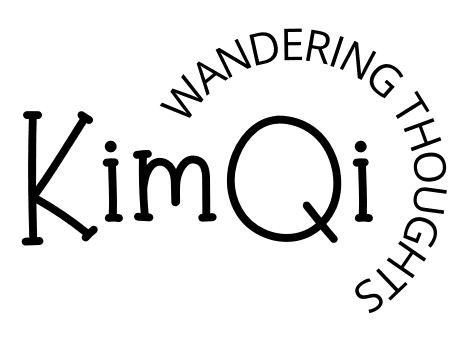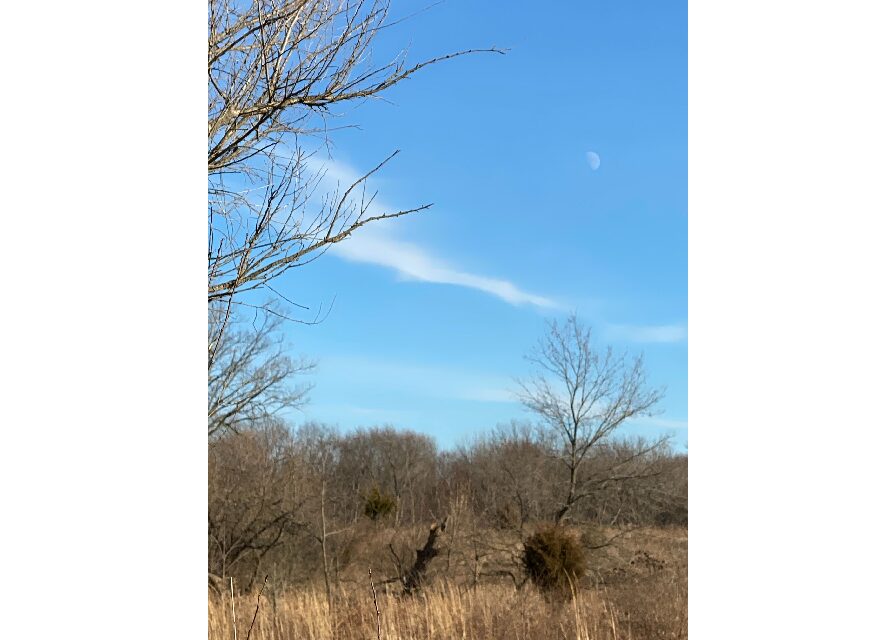“Thank you to the woman barefoot in a gaudy dress
For stopping her car in the middle of the road
And the tractor-trailer behind her, and the van behind it
Whisking a turtle off the road.” Ross Gay
My daughter sent me the haunting, beautiful, inspirational poem/song “Catalog of Unabashed Gratitude.” In it, I recognized myself and laughed. I know plenty of women that fit this description. WE, the collective barefoot hippy-skirted turtle rescuers, were seen.
Still grinning, I was inspired to venture out to see what I could see.
Driving to a local forest preserve, I saw the moon. It was 2 pm. I could see both the sun and the moon in the white-streaked sky, blue over the beige prairie.
On arrival, a particular tree captured my attention. The late afternoon sun on its bark made the shadows black and the highlights bright. The effect was craggy and sharp. Pointed. Extreme.
A small abandoned bird’s nest swayed on a thin branch in a neighboring tree. I wondered where the builders go during the winter. Further along, the gray globe of a wasp nest hung quietly in the upper branches. Wasps abandon their nests too. I looked at tree trunks for a wasp refuge. Nothing looked likely.
In the shade, the trail felt frozen under my feet, and lacy-ice edged the thin frozen glaze on the puddles. It was warm enough for the partly frozen ground to be soft and slippery in sunny spots. I had to pay attention moving through the woods to remain upright. Hoofprints looked like hieroglyphics in the thin layer of mud on the hard ground.
Dogs barked from a distant farm. A rooster crowed repeatedly.
These days are raw and stark, filled with extremes, beauty and truth.
The thing is, we have to be open-minded, open-hearted to see. The woman in the gaudy dress? Ross Gay could have laid on the horn and shook his fist because she backed up traffic. Instead, for some reason, he saw her. He saw her goal. It’s easy to be impatient and angry. It’s harder to put our selfish agenda aside and see another.
Seeing involves putting ourselves in places that present opportunities to look, too. Maybe a forest, the mountains or a prairie. We can SEE ourselves and others in art, music and literature. We can see the collective in daily activities. Sometimes seeing leads to more questions than answers. Where are the wasps? Contemplating the questions that bubble up can lead to deepening connections and understanding. It’s an art to see. It’s a gift too, for those seeing and for those being seen.
Also, keep saving the turtles.

